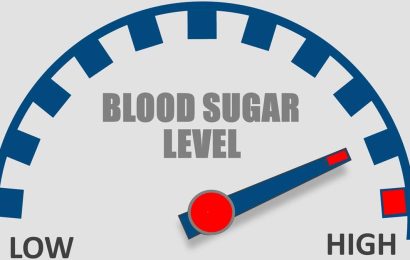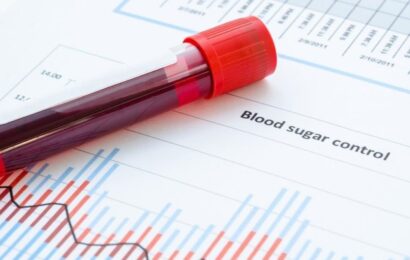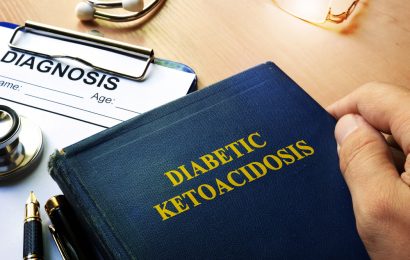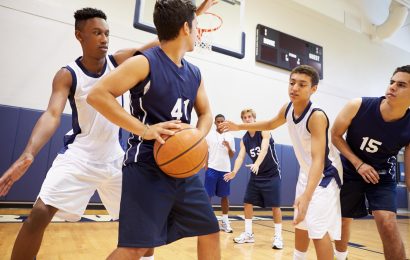One of the most common side effects of taking insulin is hypoglycemia, or low blood sugar. Hypoglycemia can be mild, moderate or severe. It can also strike fear in people with type 1 diabetes, and this fear can often be a barrier to taking insulin or taking insulin in the amount prescribed.
What is hypoglycemia?
As mentioned above, hypoglycemia means low blood glucose (sugar). According to the American Diabetes Association’s Standards of Medical Care — 2019, “hypoglycemia is the major limiting factor in the glycemia management of type 1 and type 2 diabetes.”
For the most part, hypoglycemia is defined as a blood glucose below 70 mg/dl. But signs and symptoms of hypoglycemia can vary from person to person, and certain symptoms are more worrisome than others. The American Diabetes Association has classified hypoglycemia into three levels based on blood glucose readings, as well as symptoms:
· Level 1: A glucose reading less than 70 and at or above 54
· Level 2: A glucose reading less than 54
· Level 3: A severe event characterized by altered mental and/or physical status that requires assistance
“Mild,” “moderate,” and “severe” are other terms that are often used to define hypoglycemia.
To get cutting-edge diabetes news, strategies for blood glucose management, nutrition tips, healthy recipes, and more delivered straight to your inbox, sign up for our free newsletter!
How do you know if you’re “low”?
For the most part, you’ll have certain signs or symptoms that your blood glucose is low.
Mild hypoglycemia symptoms
Sweating, shakiness, dizziness, looking pale, rapid heartbeat, feeling irritable, being hungry
Moderate hypoglycemia symptoms
Confusion, aggressiveness, personality changes, drowsiness
Severe hypoglycemia symptoms
Altered states of consciousness, including coma or seizures
You might hear the term “neuroglycopenic” in relation to symptoms of lows. This term means that there’s a shortage of glucose in the brain due to hypoglycemia. As a result, brain function and behavior are affected. Neuroglycopenic symptoms of lows include:
· Change in behavior, such as aggressiveness, combativeness, anger
· Difficulty concentrating or being confused
· Difficulty speaking
· Lack of coordination
· Lethargy
· Blurry vision or double vision
The type and severity of symptoms of lows can vary from person to person, and may be dependent, in part on age. Also, some people get symptoms of lows at a blood glucose level above 70; others don’t feel or show obvious symptoms when blood sugars are at a much lower level.
Why does hypoglycemia happen?
Hypoglycemia can occur due to several reasons:
· Not eating enough carbohydrate, perhaps due to a skipped meal or snack, or a delay in eating
· Unplanned physical activity
· Too much insulin
· Other diabetes medications, such as sulfonylureas and meglitinides
· Non-diabetes medications, including ACE inhibitors, beta-blockers and certain types of antibiotics
· Alcoholic beverages
To complicate matters, hypoglycemia may result from a combination of the above. For example, you might jump at the sudden chance to go skiing or play a game of tennis, and then treat yourself to a beer or two afterwards. Without making adjustments to your insulin and/or food intake, your risk of hypoglycemia increases due to a) the unplanned increase in physical activity and b) the ingestion of alcohol without enough eating enough carb.
How do you treat hypoglycemia?
One of the first things you hopefully learned when you were diagnosed with type 1 diabetes is how to treat a low blood sugar. As effective as insulin is, it carries the risk of hypoglycemia. Knowing how to treat hypoglycemia is critical for staying safe.
A helpful term for treating lows is the “rule of 15” or the “15–15 rule.” Here’s how it works: If your blood glucose is below 70 (or below the glucose target that you’ve discussed with your diabetes care team), or if you are feeling symptoms of a low and don’t have your meter with you, have 15 grams of carbohydrate. After 15 minutes, check your blood sugar. If it’s not above 70 (or your own target), have another 15 grams of carb. Once your blood glucose is at a safe level, eat a small snack, such as some crackers with peanut butter, or eat your meal, if it’s your usual mealtime.
Examples of 15 grams of carb include:
· 4 ounces (1/2 cup) of juice or regular soda
· Glucose tablets (read the instructions on the container for amount)
· Glucose gel (read the instructions on the container for amount)
· 8 ounces of skim or 1% milk (avoid 2% or whole milk due to the fat content)
· 1 tablespoon of sugar, honey or corn syrup
· 2 tablespoons of raisins
Some people treat their lows with jellybeans, gum drops or hard candy. If you decide to use candy, double check the Nutrition Facts label and determine the amount that provides 15 grams of carb.
Avoid reaching for any food or beverage that contains fat when you’re low. It’s easier said than done, but if you grab, say, a chocolate candy bar or a package of peanut butter crackers, the fat in these foods will slow down digestion and delay the rise in blood glucose. Also, eating a protein food, like a piece of turkey, will not raise your blood sugar.
One of the challenges with treating hypoglycemia is not overdoing it. Overtreating lows is common and can occur due to feeling hungry or being fearful of symptoms. One way to lessen the chance of overtreating is to use products specifically geared toward treating lows, such as glucose tablets or glucose gels.
You’ve likely heard this before, but it bears repeating: Always carry a treatment for hypoglycemia with you at all times. If you’re prone to having lows in the middle of the night, keep a treatment on your bedside table so that you don’t have to wander into the kitchen to find something quickly. Don’t forget to keep treatment in your car and at work or school.
When you need help from others
If your blood sugar has dropped to the point where you are unable to self-treat, you’ll obviously need assistance. Family members, significant others, roommates, co-workers and teachers need to recognize signs and symptoms of severe hypoglycemia and how to respond.
If you are able to swallow, someone may be able to persuade you to drink some juice or regular soda. He or she can place glucose gel, honey or jelly on the inside of your cheek, too. However, if you are unable to swallow, that person should administer glucagon, a hormone that signals the liver to release glucose into the blood. This means that your family, friends, etc. will need to learn how to give glucagon and when to give it. If glucagon isn’t available, or if someone is scared to give this to you, instruct them to call 911.
Hypoglycemia: Prevention is key
For some, hypoglycemia is an annoyance. For others, it can be terrifying. Avoiding hypoglycemia as much as possible is the goal. Here are steps that you can take to minimize the frequency of lows:
· Discuss your own target blood sugar levels with your doctor and diabetes educator. Your goals may be different from someone else’s, especially if you have hypoglycemia unawareness (when your blood sugar is low but you don’t feel symptoms), have certain diabetes complications, such as heart disease, or are an older adult.
· Check your blood sugar regularly or use continuous glucose monitoring, which can alert you if your glucose starts to drop or is low.
· Follow your treatment plan. If something isn’t working for you, let your doctor or diabetes educator know. Your plan can be changed.
· Learn how your insulin works; likewise, learn how different foods and types of physical activity affect your blood sugar.
· If you drink alcohol, always eat something that contains carb when you drink, and limit alcohol intake to two drinks daily if you’re a man, or one drink daily if you’re a woman.
· Check your blood sugar before you exercise; adjust your insulin accordingly as outlined by your treatment plan or, if the exercise is unplanned, eat a meal or snack beforehand.
· Check your blood sugar before you drive or operate heavy machinery.
· Call your doctor if you are sick and unable to keep food down.
· Wear or carry a form of identification that alerts others that you have diabetes.
Want to learn more about hypoglycemia? Read “Understanding Hypoglycemia” and “Hypoglycemia: What Your Inner Circle Needs to Know.”





